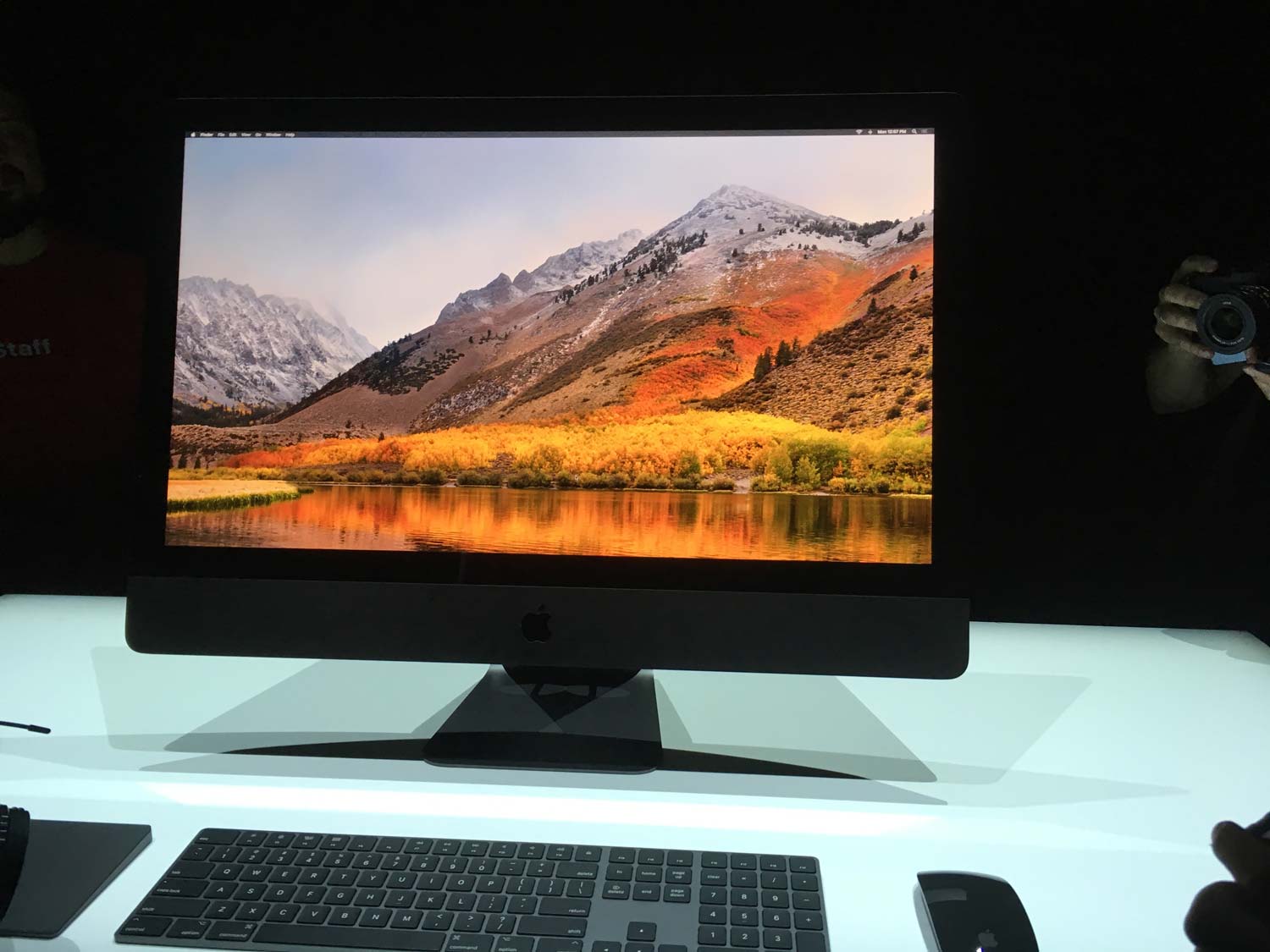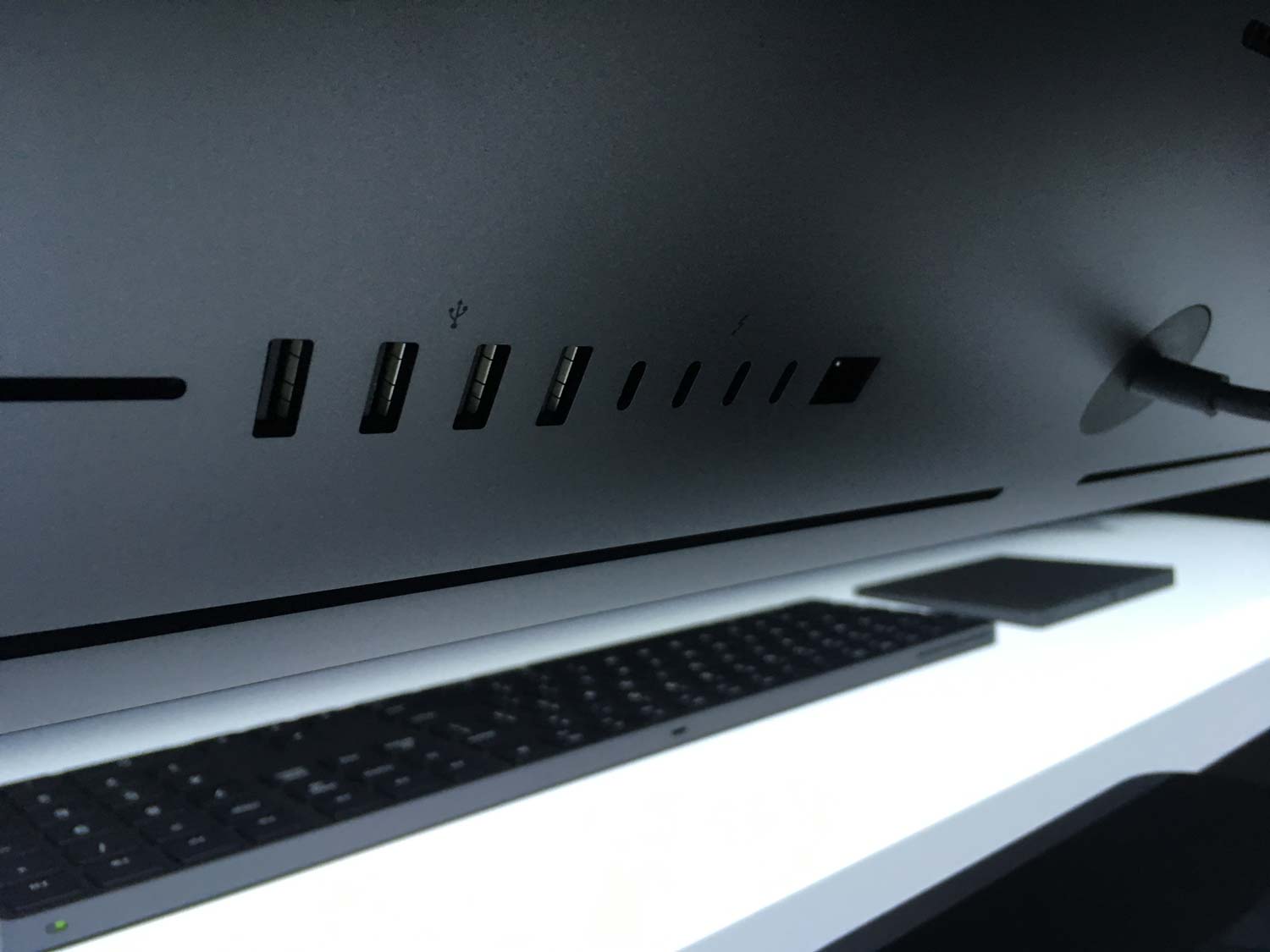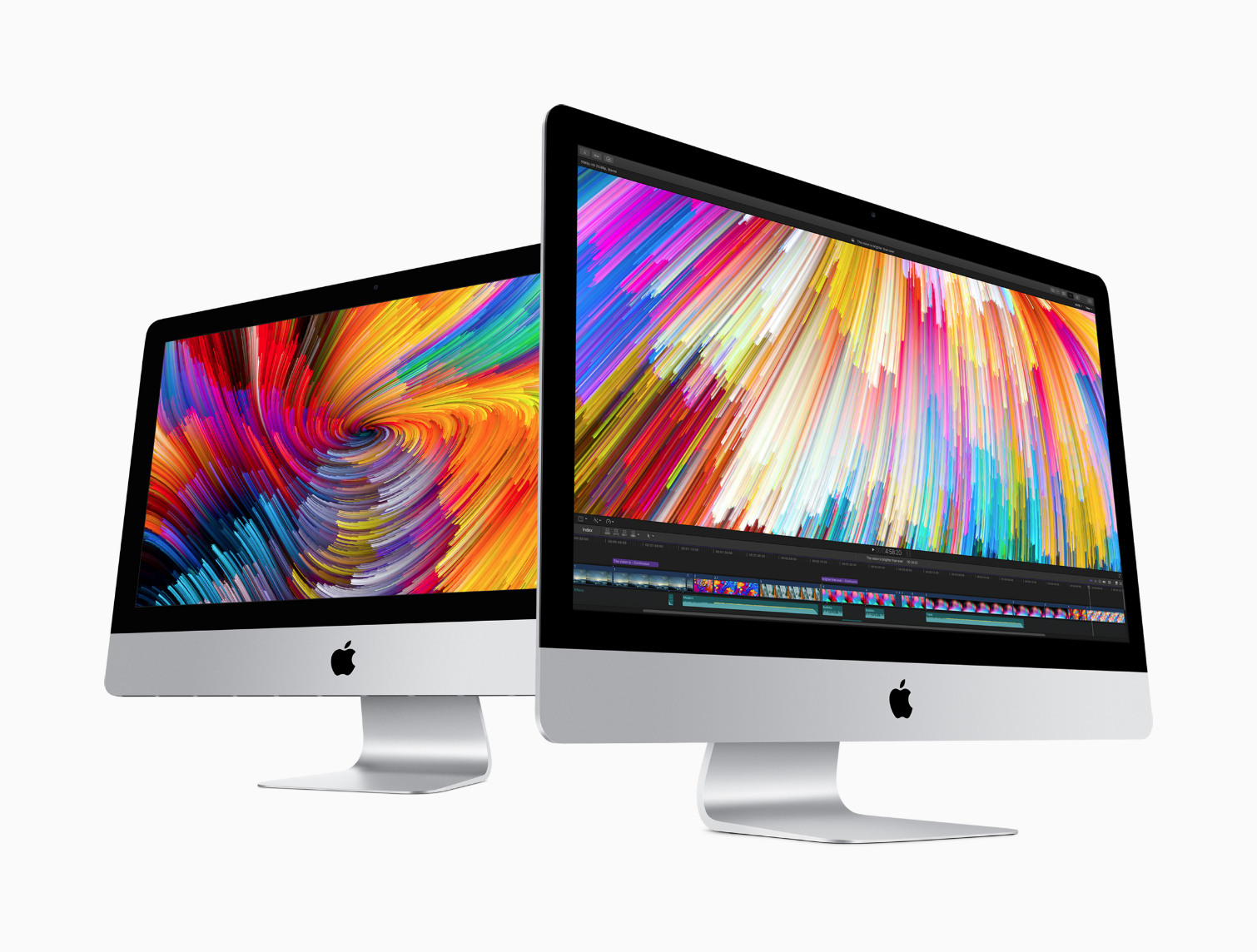iMac Pro Is the Most Powerful All-in-One Ever
Apple’s desktops rev up with Kaby Lake hardware and a hot new workstation-class model that Apple's calling 'the most powerful Mac ever.'
Apple’s WWDC always brings big news, but the hardware upgrades came fast and furious this time around, including major improvements across the board for Apple’s entire iMac line. And the updates don't end when those new models go on sale this week.
Apple is also planning a new iMac Pro for later in 2017, putting Apple’s Mac Pro workstation-class desktop into the iconic iMac design.
iMac Pro
The newest member of the iMac family is a serious powerhouse. The iMac Pro brings the workstation-class performance of the cylindrical Mac Pro to the 27-inch iMac form-factor, complete with a 5K display. To keep you from confusing the new model with the regular iMac line, the iMac Pro gets a sleek new look in Space Gray, but the important changes are all inside.

The desktop gets some serious processing power thanks to a variety of Intel Xeon processors, with options ranging from 8 cores up to 18-cores. These processors can be paired with as much as 128GB of memory, with Apple offering error-correcting code memory instead of standard RAM.
The graphics processing gets plenty of horsepower as well, with AMD’s new Vega graphics, with up to 16GB of VRAM. Apple boasts that the high-octane graphics can deliver up to 11 teraflops of single-precision compute power for 3D rendering and VR creation at high framerates. The announcement also touts the GPU’s half-precision computation abilities for machine learning, which doubles the compute power to 22 teraflops.
Options abound, with up to 4TB of storage. The iMac Pro will boast a built-in 10GB Ethernet port and four Thunderbolt 3 ports. Those Thunderbolt ports open up a lot of capability, letting you run two additional 5K display and two high-performance RAID arrays simultaneously.

Keeping all of this hardware from overheating required a new cooling system, and Apple claims that the new dual-fan, centrifugal fan design in the iMac Pro will keep everything cool and quiet.
Sign up to get the BEST of Tom's Guide direct to your inbox.
Get instant access to breaking news, the hottest reviews, great deals and helpful tips.
The new iMac Pro will come to market in December of this year, with a starting price of $4,999 for the 8-Core Intel Xeon model.
iMacs Get a Boost
The iMac gets a big boost with the move to Intel’s 7th Generation Kaby Lake processors. The new processors offer speeds up to 4.2 GHz, and support for more memory — up to 32GB on the 21.5 inch iMac, and up to 64GB on the iMac 5K 27 inch.

Coming along with the new processors is an update to Intel’s Iris Pro Graphics 640, which offers better overall performance. But graphics options go far beyond integrated solutions with the new Radeon 500-series GPUs available across all models of the iMac. The iMac Retina 4K 21.5- inch will now be available with AMD Radeon discrete graphics, with your choice of Radeon Pro 555 and 560 graphics cards and up to 4GB of dedicated VRAM. Combine this with Apple’s new Metal 2 graphics API and the native support in MacOS High Sierra, and VR just became a reality on the iMac, for gaming and content creation alike.
Apple’s Fusion Drive — Apple’s take on hard drive/solid-state drive hybrid storage — is also coming standard to all 27-inch iMacs, and is an option available on 21-inch models. Even on those 21-inch models without Fusion Drives, storage is getting larger and faster, with up to 2TB of solid-state drive storage.
If you’ve been loving the USB-C ports and Thunderbolt 3 support offered on the latest MacBooks, you can stop being jealous of your laptops, since the iMac now comes with Thunderbolt 3. Instead of the miniDisplayPort connections seen on previous iMacs, the new models will boast USB-C with Thunderbolt 3, supporting all of your USB-C capable accessories, and opening up high-powered options for RAID storage and external 4K & 5K displays.
MORE: Best All-in-One PCs
The displays that sit front and center on the iMac are also being improved, with brighter 500 nit displays and 10-bit dithering, which supports up to a billion colors.
Apple seems to have a definitive use in mind for all this extra horsepower, touting its 5K 27-inch iMac as a VR creation machine. In a hands-on demo area at WWDC, we saw the 27-inch iMac running Unreal Editor. The app was capable of running in VR mode on the iMac, meaning developers could strap on an HTC Vive headset and interact directly with their creations.
That's exactly what we did at WWDC, using one of the Vive's controllers to pick up a virtual ball and grabbing it with a second controller to expand its size. As we made the ball bigger, it knocked into other virtual objects in our sandbox, sending them sprawling in real time.
Apple may tout the 27-inch iMac as a content creation tool, but it's not bad for consuming VR either. Still using an HTC Vive connected to an iMac, we got to experience the same Star Wars demo built with Epic's Unreal Engine that featured in the WWDC keynote. We found ourselves standing next to Darth Vader and a crashed TIE Fighter on a lava-strewn landscape. It's safe to say our knees buckled when Vader took a swing at us with his lightsaber.
Apple has yet to establish itself in the VR world, with Oculus founder Palmer Luckey dismissing the Mac as recently as last year. The iMacs unveiled by Apple today sound like the company's push to change that perception.
New iMac models will be available for order this week, starting June 7th. The base model 21.5-inch iMac will start at $1099, while the 4K model has been dropped to $1,299. The 5k 27-inch iMac starts at $1,799.
Updated at 9:23 p.m. ET with hands-on demos from WWDC.
Brian Westover is currently Lead Analyst, PCs and Hardware at PCMag. Until recently, however, he was Senior Editor at Tom's Guide, where he led the site's TV coverage for several years, reviewing scores of sets and writing about everything from 8K to HDR to HDMI 2.1. He also put his computing knowledge to good use by reviewing many PCs and Mac devices, and also led our router and home networking coverage. Prior to joining Tom's Guide, he wrote for TopTenReviews and PCMag.
-
Bardebay I mean,ya,and plus now the iMac pro....Reply
So apple is going pretty far and cool....except the price:)

